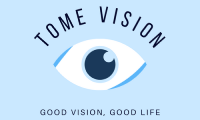Rare Eye Conditions Explained: Shedding Light on the Uncommon
Introduction:
Our eyes are magnificent organs that allow us to perceive the world around us. However, they are not exempt from developing rare conditions that can significantly impact our vision and overall eye health. In this article, we will explore two uncommon eye conditions that affect a small percentage of the population. By shedding light on these conditions, we hope to raise awareness and offer valuable insights into the fascinating world of ophthalmology.
I. Stargardt Disease: The Twilight of Vision
Stargardt Disease, also known as Stargardt Macular Dystrophy, is a genetic eye disorder that affects the macula, a small area in the retina responsible for central vision. This condition predominantly manifests in children and young adults, causing progressive vision loss over time.
Key features and symptoms of Stargardt Disease include:
– Central vision loss: Patients experience a decline in their ability to see fine details, the recognition of faces, and difficulties in reading.
– Photophobia: Increased sensitivity to light, causing discomfort in brightly lit environments.
– Color vision abnormalities: Individuals may have difficulty distinguishing between different colors or perceiving shades accurately.
– The formation of yellow deposits: Deposits, known as lipofuscin, accumulate in the macula, leading to its progressive degeneration.
– Onset and progression: Symptoms often appear during childhood or adolescence and progress gradually, resulting in vision impairment by early adulthood.
Currently, there is no cure for Stargardt Disease. However, ongoing research is being conducted to discover new treatments and interventions. Genetic counseling and regular eye examinations are crucial for early detection, allowing for prompt management and support for affected individuals.
II. Fuchs’ Dystrophy: When the Cornea Calls for Attention
Fuchs’ Dystrophy is a relatively uncommon eye condition characterized by the gradual deterioration of the cornea—a clear, dome-shaped structure at the front of the eye responsible for focusing light onto the retina. The disease primarily affects older adults and often runs in families.
Common characteristics and symptoms of Fuchs’ Dystrophy are:
– Corneal swelling: A condition known as corneal edema, which causes blurry or hazy vision, particularly in the morning or after prolonged periods of inactivity.
– Sensitivity to light: Patients may experience increased sensitivity to bright lights or glare.
– Eye discomfort: Individuals may report a sensation of grittiness, dryness, or itchiness in their eyes.
– Blurred or distorted vision: Visual acuity may decrease, resulting in difficulty driving, reading, or performing detailed tasks.
While Fuchs’ Dystrophy typically progresses slowly, it can lead to significant vision impairment over time. Treatment options for Fuchs’ Dystrophy depend on the severity of the condition and may include medicated eye drops, ointments, or, in severe cases, corneal transplants.
Conclusion:
Understanding rare eye conditions is essential for recognizing the signs and symptoms, seeking appropriate medical help, and providing support and resources for affected individuals. While Stargardt Disease affects central vision, Fuchs’ Dystrophy focuses on the deterioration of the cornea. As always, regular eye check-ups, early detection, and genetic counseling are vital steps towards managing and treating these eye conditions. While treatment options may be limited at present, ongoing research offers hope for future breakthroughs. By sharing knowledge and raising awareness, we move closer to a world where rare eye conditions are better understood and effectively managed.
